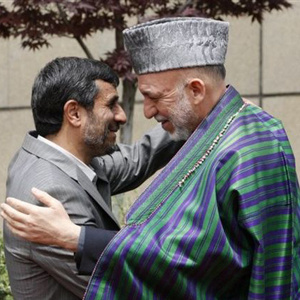Iran’s Record in Afghanistan Is Transparent

So, what else is new? one might ask when facing the news. But wait before giving the question your own interpretation: it is not a question going to be posed by typical Western journalists or observers, but by one who adequately knows about the history of Iran-Afghanistan relations; one who knows that even up until the mid-19th century the two countries were under the same rule; one who is well aware that within this region, Iran and Afghanistan are the two countries which have the deepest cultural and historical ties.
At a minimum, the Islamic Republic of Iran’s aid to Afghanistan has a three-decade history. Since the fall of Taliban, Tehran has donated humanitarian aid to its eastern neighbor on several occasions. At the 2002 Tokyo Conference on Reconstruction Assistance to Afghanistan, the Iranian foreign minister suggested 500 million dollars in aid to this country. His proposal was ratified by the Iranian parliament –Majles, in the form of a half charitable, half interest-free loan.
According to the operational plan, the gratuitous loan was spent during a five-year period, with Iran allocating fifty million dollars per annum on projects specified by the Afghan government. Look at the outcome: more than 330 projects have been carried out by the Iranian government and delivered to Afghanistan since then; some vital ones such as the 317-km Dogharoun-Herat Road project, or the Friendship Bridge which connects Iran’s border town of Milak to Zaranj in Afghanistan.
Tehran’s aid to Afghanistan, whether in the form of financial donation or the hosting of more than a million Afghan refugees in Iran cannot be overlooked. During the last three decades, Afghans living in Iran have received the same subsidies and enjoyed roughly the same facilities as Iranian citizens. These direct and indirect donations amount to at least one billion dollars, a number not in the least compensated by the financial assistance the UN and the international community have handed to Iran for this purpose.
Ten years after occupation of Afghanistan, extraregional forces –and to some extent a number of Afghan officials- have come to the conclusion that their cooperation is as beneficial as a zero-sum game. Moreover, many questions have arisen about the efficiency of the Afghan government and the unsolved problems in this country. They have not appreciated, however, the basic principle that development and the establishment of security are inseparable for the war-ridden country of Afghanistan.
Perhaps extraregional states and some Afghan officials are trying to hide behind a smokescreen of anti-Iran news, such as Tehran’s cash aid to a high-ranking Afghan official, or explosive cargo smuggled from Iran. Such rumors are merely aimed to undermine Iran’s constructive role in Afghanistan. Unlike the other members of the international community who can hardly present a tenable record, Iran’s aid to Afghanistan is transparent and measurable.
Ebrahim Taherian is Iran’s former ambassador to Afghanistan.

